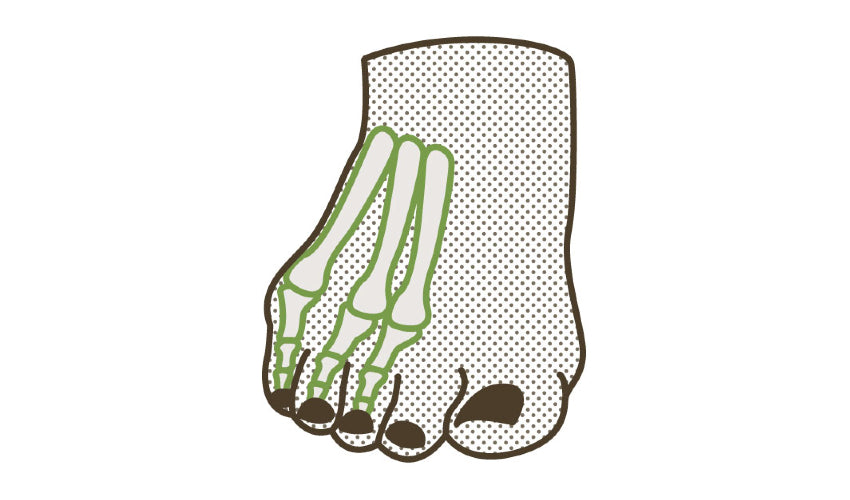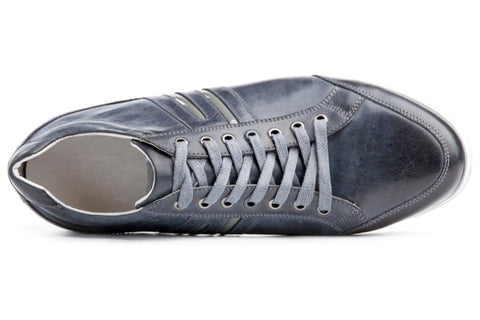Bunionettes: Conventional vs. Natural Approaches

In this video, Dr. Ray McClanahan, a sports podiatrist at Northwest Foot and Ankle and the inventor of Correct Toes, discusses how bunionettes are treated using... Read more

Bunionette: A bump or prominence on the fifth metatarsal bone, at the base of the little toe.
Bunionettes are less common than regular bunions (bumps or prominences that develop on the inside part of the base of the big toe), though they are similar to a true bunion in their appearance and symptoms. Bunionettes are often called tailor’s bunions because they frequently occur in tailors who sit cross-legged on hard surfaces for prolonged periods. The outside aspect of the feet, when sitting in this position, is subjected to excessive pressure, and constant rubbing of the area against the ground leads to the formation of a painful bump at the base of the fifth toe. Women who wear pointed-toe shoes or high heels are more likely to develop this condition, due to the extreme pressure on the outside part of the foot caused by fashion footwear.
Common signs and symptoms of bunionettes—in addition to the angular deformity at the fifth metatarsophalangeal joint—include:
Bunionette symptoms are often made worse by wearing shoes that possess tapering toe boxes, which rub against the prominence and irritate the soft tissues underneath the skin of the affected area.
Inappropriate footwear is the leading cause of bunionettes in our society. The tapering toe boxes of most conventional shoes push the fifth toe toward the fourth toe, immobilizing the little toe in this deformed position. The fifth toe, when it is held in this position, is more susceptible to trauma from the shoe. Most shoes available to consumers today are not sufficiently wide for the average foot, especially in the toe box, or they have a non-expansile upper that fails to accommodate any sort of bony prominence.
Other possible causes of a bunionette include certain arthritic conditions, such as rheumatoid arthritis or psoriatic arthritis, that damage bone and lead to joint misalignment. Certain neuromuscular diseases may also cause a bunionette, due to the resulting imbalance in the muscles and tendons that act on the foot and the subsequent deformation of foot structure. Leg length discrepancies and foot trauma or surgery may also be causative factors for this condition. In some cases, a bunionette may be confused with a bone spur that arises on the side of the head of the fifth metatarsal bone.
Most bunionettes can be treated conservatively by wearing shoes that allow the toes to splay the way nature intended. Choose foot-healthy shoes that possess a wide toe box and little or no heel elevation or toe spring. Other strategies or tools for treating bunionettes include:
In certain advanced cases, a surgeon may remove a wedge of bone from the base or back of the fifth metatarsal. However, surgery for this foot problem is usually unnecessary. For most people, an effective and noninvasive first line of approach to treating bunionettes involves wearing men's or women's foot-healthy footwear and using Correct Toes toe spacers. Review all possible treatment options with a foot health professional before choosing surgery to correct a bunionette.
Disclaimer:
The above content is for educational or informational purposes only and is not intended to replace or augment professional medical instruction, diagnosis, or treatment. Read full disclaimer here.$65.00
$10.00
$14.00
$55.00
$30.00
$30.00

In this video, Dr. Ray McClanahan, a sports podiatrist at Northwest Foot and Ankle and the inventor of Correct Toes, discusses how bunionettes are treated using... Read more

Toe box taper—the narrowing of a shoe from the ball of your foot to the ends of your toes—is one of the most harmful features of conventional... Read more


How long does it take to fix a tailor’s bunion with Correct Toes, on average?
Hi, Jimmy,
Thank you for your comment. Everyone’s feet are different, and depending on the severity of the bunion, as well as other factors (like how much time you spend in conventional footwear), the timetable for rehabilitation can vary.
We can’t give a definitive timetable, but we would recommend wearing foot-healthy footwear (www.naturalfootgear.com/collections/mens-shoes) in combination with Correct Toes if you’re hoping to see progress as quickly as possible. Correct Toes toe spacers are an excellent corrective tool on their own, but they have the greatest corrective effect when they are worn inside appropriately wide toe box footwear during weight-bearing activities (e.g., standing, walking, running, etc.).
I hope this info helps! If you have any further questions about the footwear we offer, or if you have additional questions about tailor’s bunions, please do let us know!
Kind regards,
Andrew Potter